Vegetable Garden Basics: Part 2 – Raised Beds Pros & Cons
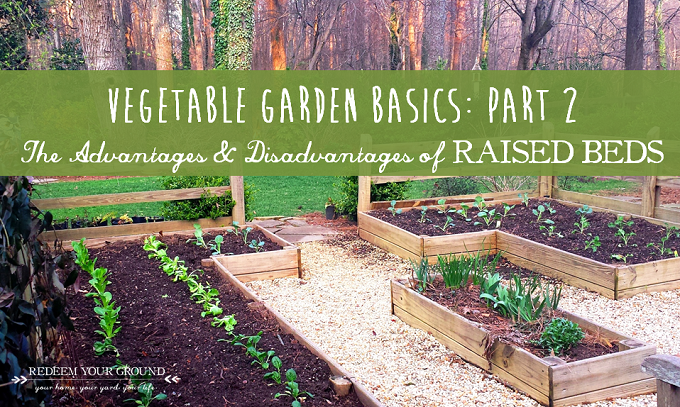
Alright… in Part 1 of my Vegetable Garden Basics series, I answered the first question you should ask when starting your very own family vegetable garden…Where should I put it? Today I’m going to try to answer the next question…Should I build raised beds … or just plant my veggies directly in the ground?
Should I build raised beds … or just plant directly into the ground?
My quick response to this question is – it depends. I know…that’s a bit of a copout, but it’s true. The right answer for you really depends on a number of factors…such as:
-
- What are your soil conditions?
- What’s your budget?
- Do you have the time to build something?
- What’s the look (i.e., design) you’re going for?
- Are there other factors you need to consider (e.g., critter problem, access issues, etc.)?
If you have great soil, but little time and not much money…regardless of the look you’re going for or any of the other factors, then planting directly into the ground is probably going to be your best bet.
However, in order to help you make a more informed decision…I’ve provided you with a list of what I see as the advantages & disadvantages of raised beds, as well as what I chose to do in my yard.
Advantages & Disadvantages of Raised Beds
Although this is not an exhaustive list of the advantages & disadvantages of raised beds…it’s a good start and should help you make a better decision for what’s best for you.
1. Soil Condition
Advantages: If the soil in your yard is less than ideal (e.g., rocky, sandy, compacted, too little/too much of a certain mineral, etc.), raising your “growing plane” up with raised beds and bringing in new soil will help solve that problem.
Disadvantages: Buying new soil costs money and could require more time (e.g., trips to the store and/or taking the time to wheel barrow it back and forth from where it’s been delivered onsite).
Raised beds also tend to dry out more quickly (i.e., you’ll need to water them more often) and may need to be amended more often with organic matter given that all the good bio-stuff that’s happening in your native soil is below grade.
2. Critter & Pet Control
Advantages: By simply being raised off the ground, raised beds will help keep some of the roaming critters out of your vegetable garden. It will also more likely keep dogs from doing their business where you don’t want them to.
In addition, since raised beds provide a more controlled environment, you can more easily add a few elements to help keep out unwanted guests: 1. by putting wire mesh at the base of your raised beds, you’ll more easily keep out borrowing critters; and 2. by adding a fence around your raised bed area, you’ll keep other roaming critters and pets out. But wily cats will still get in.
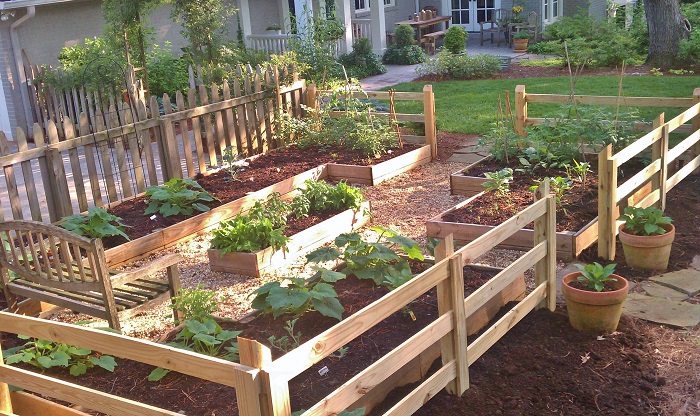
Disadvantages: Once again, building anything costs more time & money.
That said, you can certainly add a fence around an in-ground garden, but from a design perspective it’s often easier to do that around another man-made structure…or even attach it directly to your raised beds (that’s what I did).
3. Weed Control
For both raised beds and open ground vegetable gardens, you can add landscape fabric under your soil to add additional protection from weeds.
Advantages: However, by the mere fact that your beds are raised off the ground and you’re using “clean” soil, many have found that weeds are more easily controlled using raised beds. And as I reference below, if you do get weeds, it’s often easier to get to and yank them out of raised beds.
4. Design – Aesthetics & Flow
Advantages: Raised beds can be a valuable design element in your outdoor spaces. They can add architectural interest, as well as improve the general flow of your outdoor spaces. In addition, raised beds can help keep your veggie garden looking neater…even if your veggies are sprawling about inside the beds.
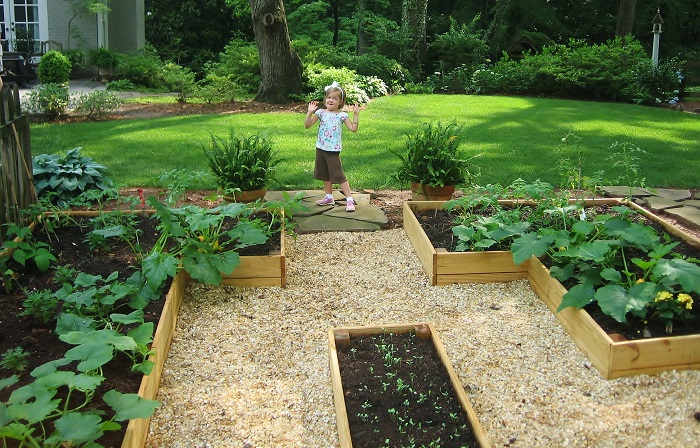
Disadvantages: However, if you don’t have the right design for your raised beds, what could have been beautiful and more functional could end up being an eyesore and difficult to get around. In other words, planting your veggies within the rest of your landscape may look better and may provide a more natural flow.
So if you do end up using raised beds, make sure you spend some time to think through and map out where you’re going to put them.
5. Design – Ergonomics
Advantages: By definition, raised beds are above ground level…so they require less bending over when planting, weeding, and harvesting. The higher up you go with your beds, the less bending.
Disadvantages: Likewise, the higher you go with your beds the more time and money it will take to build them.
6. Design – Creativity
Advantages: For those of you who are looking for another creative outlet, raised beds can be just that. Sure…the majority of raised beds you’ll see are simply rectangles made of wood. That’s likely because that’s what most people think of when they envision raised beds…and they’re also probably the easiest to construct. However, you’re certainly not limited to that.
Jump on Pinterest and you’ll find raised beds made from all sorts of materials or large containers…in different shapes…and arranged in various patterns: from galvanized watering troughs to stones…and from logs to a group of hexagonal beds laid out in an interesting pattern. The sky’s really the limit.
Disadvantages: If you do decide to go crazy with your design and the materials you use…make sure you take into consideration what may be required to ensure you’re still providing the right growing environment for your plants to thrive. For instance: watering more often (some metals heat up faster than others); providing proper drainage (containers have bottoms, so you’ll need to drill holes and add rocks); and adding more soil to fill larger objects/spaces.
7. Time
Disadvantages: As is indicated in most of the factors above, one of the biggest disadvantages of going with raised beds is the extra time it will take to plan, build…and as you’ll see below, maintain them.
8. Cost
Disadvantages: And probably the biggest disadvantage of raised beds is that they cost more money to build than if you simply planted your veggies directly into the ground. In addition, depending on what type of material you use, there may be additional cost in maintaining your raised beds. For instance, although I’ve only had my raised beds for 5 years, I’ve noticed recently some of the posts and boards are needing to be replaced. This will cost more time & money.
I Chose Raised Beds … and Then Some
Although I’ve planted edibles in my other landscape beds and diversified further with a Tower Garden ®, I chose to build raised beds for my “official” vegetable garden. I made that decision for several reasons:
-
- The soil condition of the only semi-sunny spot in my yard was very compacted clay (I actually had to break-up the end of my driveway to make way for my veggie garden).
- This spot was right outside our back door…so as a designer I wanted to make sure that my garden not only had architectural interest year-round, but that it also flowed easily with my other outdoor spaces.
- I also liked the idea of formalizing the space…in other words, giving it a greater sense of intention, and I felt that raised beds helped make that happen.
Although there were other factors that came into play, these were the primary reasons why I chose to go with raised beds. And I’m really glad that I did.
Growing a Greener World® Resources
Here are a few great resources from Growing a Greener World® that I thought y’all might find helpful as you consider raised beds further:
And here’s a video I did with Joe Lamp’l (of Growing a Greener World® fame) for Exmark on how to build raised beds.
![]()
I hope all this helps. Please chime in with questions…as well as what factors you considered when choosing raised beds or not…and why. I’d love to hear and learn from you.
And don’t forget to check back in for Parts 3 & 4 of this Vegetable Garden Basics Series…where I hope to answer the rest of your other most often asked veggie garden questions.
Take care,

You may also enjoy these posts from RYG ...
If you're not already subscribed to RYG and want to get periodic updates, links to new posts & other ground redeeming info ... just enter your email address below. Easy as that!

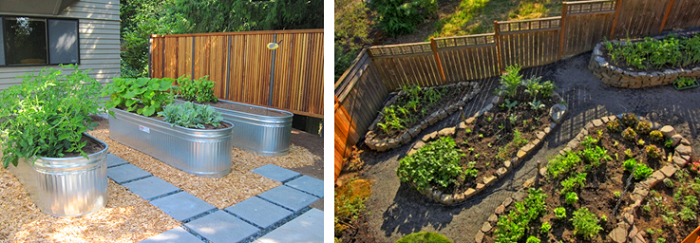
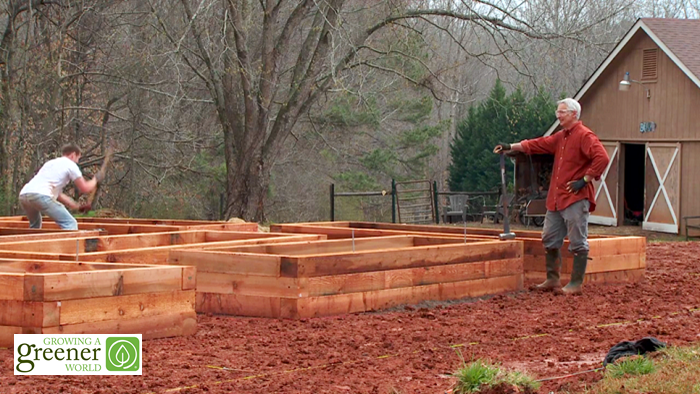



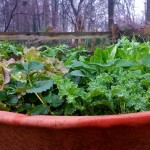
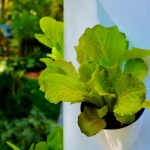
Nice job on presenting the pro’s and con’s. Too often we I think we assume raised beds are the way to go. And in many cases, that’s true. But for the reasons you pointed out, an in-ground bed can be the best choice in certain circumstances. Thanks for covering this topic.
Thanks for your comments Joe! And your chiming in means a ton, given that you are THE organic gardening guru! I look forward to continuing to learn from you as we move things forward together with GGW! Take care my friend, D.
I can’t even tell you how excited I am about this series. So much good stuff. THANK YOU for all the wisdom!
You are SO welcome Micah! And only you know how much I have to thank YOU for being the inspiration for this series and all your help on the back-end of things. I appreciate you my friend. Take care, D.
Your garden is so pretty, Doug. We use mostly raised beds, too, and have been adding one or two a year for a while now. They are great for our situation because our soil consists of really dense clay. We mix in compost every spring and mulch with grass clippings or old straw from the chicken pen to retain moisture and keep the weeds down.
Thanks Deb…for your comments and your added insight. I need to start mulching more. I could use the straw from our chicken coop…it’s just that it’s on the other dadgum side of our yard…and I just end up adding it to my makeshift compost pile…which is a lot closer! Thanks again Deb! Take care, D.
I just love your raised beds. They are inviting. I want to just come on over, wander through, and have a snack! Thanks for sharing.
Thanks Brandi Nelle…you ole’ Southern belle! You can come on over anytime you want…but you’ll need to wait a little while before you’ll have much to snack on! Take care, D.
I love this … I’m sharing it all over social media. This is a fabulous write-up about growing in raised beds. I grow in raised beds and one of the best things about it is you can control your soil condition. I look forward to watching your garden grow this spring and summer!
Thanks so much Bren…for your kind words and sharing your thoughts too! Also, thanks for the social media shout out! Much appreciated. And I just checked out your awesome blog – http://brenhaas.com/ … and subscribed. What great and beautiful and tasty stuff you’ve shared. Thanks for all your efforts there! I know how much “work” it is to keep on top of all of that…but when it’s your passion, it’s well worth it. Take care and thanks Bren! – Doug
I built raised beds for my new potager last year, and absolutely love them. Wish I’d done it forty years ago! You can grow so much more in less space, and maintenance is much, much easier! Yes, the initial cost is more, but I can enjoy my garden because it takes so much less time. I have forty beds, but I can weed them in about an hour a week so nothing gets too ugly and frustrating. Love the series, and can’t wait for the next installment!
Thanks so much Carolee…love your insight. Wow…40 beds! That’s crazy. I look forward to hearing how year 2 w your raised beds go. I’m needing to do a bit of repair on my in the next few weeks…then we’ll be good to go. Please chime in again…we’d love to hear from you. Take care, D.
Your raised beds are absolutely beautiful, and as Brandi said, VERY inviting and welcoming. Just looking at your picture of the beds was calming….I can just imagine how glorious it is to walk around it with a cup of tea. I must also add, the garden fairy (?your daughter?) in the picture no doubt adds an additional touch of joy to your garden and your lives. Thanks for the inspiration to begin my vision for my raised beds this year.
Thanks Laura…for your oh-so-kind words!!! So glad that this post inspired you to begin your raised beds. And I have no doubt you’ll be glad that you did too! And yes, that is my youngest daughter…the garden fairy. That pic was from many moons ago…the 1st or 2nd year of our raised beds. She’s now 11 years old!!! Crazy. Anyway, good luck w your raised beds…and please reach out again. Take care, D.